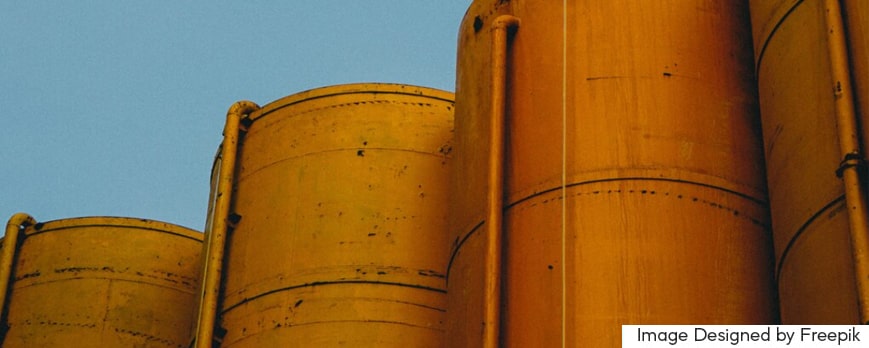Tank or cistern coating paints are specialized products designed to protect the internal and external surfaces of these containers against corrosion, chemicals, and other environmental factors. These paints are essential in industries such as food, potable water, and industrial sectors, where the integrity of the tank is crucial for maintaining the quality and safety of the stored content.
Importance and Relevance
Using tank and cistern coating paints is vital to prolong the lifespan of these equipment, prevent contamination, and ensure proper storage of products. The right choice of these paints can lead to significant savings in maintenance and repair costs in the long run, as well as compliance with health and safety regulations.
Types and Categories
Epoxy Paints
Epoxy paints are known for their excellent adhesion, chemical resistance, and durability. They are ideal for applications requiring high corrosion resistance and where operating conditions can be severe, such as in the chemical and petroleum industries.
Polyurethane Paints
These paints offer high resistance to abrasion and UV rays, making them suitable for tanks exposed to the outdoors. They also have good flexibility, allowing them to adapt to tank movements without cracking.
Acrylic Paints
Acrylic paints are easier to apply and dry quickly. They are suitable for tanks not exposed to extremely harsh conditions and where aesthetics are also important, such as in some potable water applications.
Chlorinated Rubber Paints
These paints provide excellent resistance to water and chemicals, making them ideal for applications in potable water systems and tanks storing corrosive liquids.
Features and Properties
Corrosion Resistance
One of the most important properties of these paints is their ability to resist corrosion, protecting tanks from the harmful effects of exposure to water, chemicals, and other corrosive agents.
Durability and Longevity
High-quality paints can significantly extend the lifespan of a tank, reducing the need for frequent repairs and replacements.
Chemical Resistance
The paints must be able to withstand the action of specific chemicals that may come into contact with the tank, ensuring that they do not degrade or contaminate the tank’s contents.
Ease of Application
The ease of application of the paint is crucial to ensuring uniform and effective coverage. This includes properties such as drying time, substrate adhesion, and compatibility with common application equipment.
Applications
Food Industry
In the food industry, it is crucial that tanks used to store edible products are protected against contamination. The paints used must comply with strict health regulations to ensure that no toxic substances migrate into the food.
Potable Water Systems
Cisterns and potable water storage tanks must be coated with paints that not only protect against corrosion but are also safe for contact with potable water, preventing any contamination.
Industrial Tanks
In industry, tanks are often exposed to extreme conditions, including aggressive chemicals and high temperatures. Paints for these applications must offer high chemical and thermal resistance.
Agricultural Cisterns
Cisterns used in agriculture to store water, fertilizers, and pesticides also require protective coatings to prevent degradation and ensure the quality of the stored products.
Benefits
Protection Against Corrosion
The main benefit of coating paints is their ability to protect tanks against corrosion, which can cause structural damage and contaminate the tank’s contents.
Prolonged Tank Lifespan
By preventing corrosion and other damage, these paints can significantly extend the lifespan of tanks, reducing the need for repairs and replacements.
Maintenance of Content Quality
By preventing contamination and tank degradation, the paints help maintain the quality of stored content, whether it is water, food, or chemicals.
Long-Term Cost Reduction
Although the initial cost of application may be high, tank coating paints can significantly reduce long-term maintenance and repair costs.
Challenges and Limitations
Application Conditions
Environmental conditions during application, such as temperature and humidity, can affect the paint’s effectiveness. It is crucial to follow the manufacturer’s recommendations to ensure proper application.
Surface Preparation
Proper preparation of the tank surface is essential to ensure good paint adhesion. This can include cleaning, degreasing, and rust removal.
Future Perspectives
Developments in Nanotechnology
Nanotechnology promises to revolutionize the field of coating paints, offering solutions with improved corrosion resistance and durability.
Sustainability Trends
Sustainability is a growing trend, and it is expected that more eco-friendly and environmentally sustainable paints will be developed in the future.
Advances in Corrosion Protection
Advances in materials and technology are expected to continue improving corrosion protection, offering more effective and durable solutions.
Conclusion
Tank coating paints are essential to protect these structures against corrosion, chemicals, and other environmental factors. Proper application can extend the lifespan of tanks, maintain the quality of stored content, and reduce long-term costs. Continuous education on new technologies and advancements in the field of coatings is important to ensure the best available solutions are used and to keep tanks in optimal condition.

